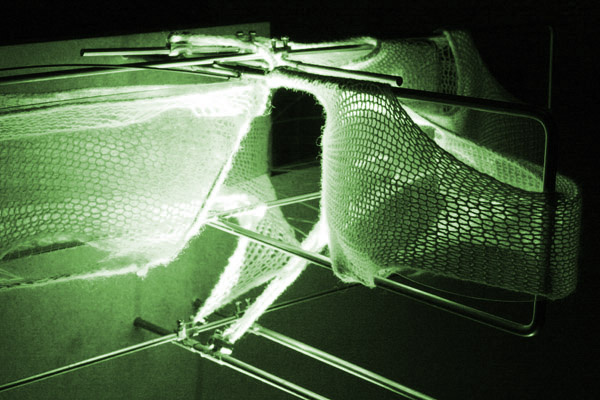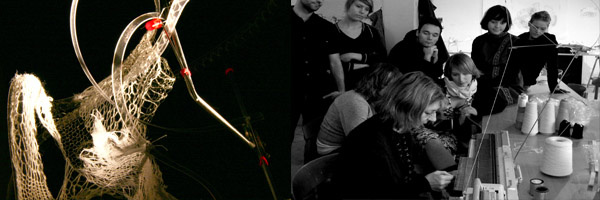Knitter (2006-2007)

A workshop collaboration between CITA, The Danish Design School and Constructed Textiles at the University of Brighton
Knitter is a series of workshops undertaken by architect Mette Ramsgard Thomsen and knitter Toni Hicks at the Royal Danish Academy of Fine Arts, School of Architecture, the Danish Design School and Interior Architecture, School of Architecture and Design, University of Brighton.
The workshops explore knitted structures for architecture. At the most immediate level the workshop focussed on teaching architecture students how to consider textile and knitting as a means of thinking skin in building. From an architectural point of view the interest in knitting lies with the inherent malleability and flexibility of the surface as well as with the potential for create merging multiple yarns and materials allowing for a specification of the properties of the skin at eny given moment. As such knit becomes a model for thinking composite materials.

Further interests in knit as a particular textile structure for architecture is the notion of the bespoke. Knit is made to measure. Rather than producing a given material and then cutting it to size, knit is traditionally fabricated in the size and shape needed. As such the structure is inherently three dimensional, pliable and shaped.
In the workshops students developed the notion of a complex skin where hollows, thickenings, splicings and pleats create new depths. Students were asked to invent their hybrids of knitting, felting, sewing, crocheting so as to graft, merge or fold spaces together.
Working in cross disciplinary teams of architecture and textile students, we explored the body and its relationship to its environment, fusing ideas of garment and building membranes. How can a structure incorporate movement and change? What are the potentials for designing bespoke building material hybridising different performances of weatherproofing, structure, insulation and/or aerodynamics? What happens when a building is worn? When a dress is sited?

